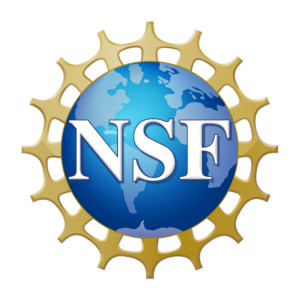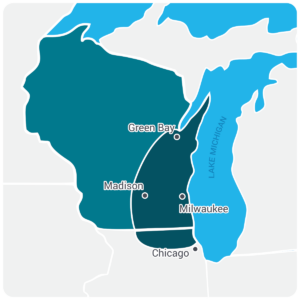nsf Resiliency Innovation Engine: Frequently asked questions
Click here to return to main NSF Resiliency Engine Page.
What is the NSF Regional Innovation Engine program?
 The Regional Innovation Engines, or NSF Engines, program catalyzes and fosters innovation ecosystems across the U.S. to:
The Regional Innovation Engines, or NSF Engines, program catalyzes and fosters innovation ecosystems across the U.S. to:
- Advance critical technologies.
- Address national and societal challenges.
- Foster partnerships across industry, academia, government, nonprofits, civil society and communities of practice.
- Promote and stimulate economic growth and job creation.
- Spur regional innovation and talent.
The NSF Engines program uniquely harnesses the nation’s science and technology research and development enterprise and regional-level resources. NSF Engines can catalyze robust partnerships rooted in scientific and technological innovation to positively impact the economy within a geographic region, address societal challenges and advance national competitiveness.
Regions have two options when submitting a proposal:
- Type 1 (Development): $1 million over 2 years for a region – up to 50 awards total
- Type 2 (Launch): up to $160 million over a period of up to 10 years for a region – five awards total
What is the vision for Wisconsin’s Resiliency Innovation Engine?
The Water Council has received a Type 1 Development Award to plan a Resiliency Innovation Engine.* This will serve as the catalyst for a Type 2 award aimed at facilitating the solutions needed to enable manufacturers and utilities to mitigate and adapt to the effects of climate change through water and energy innovation, and to quickly scale those solutions for wider use by industry, government and other stakeholders.
What organizations are leading the Engine?
The Water Council is the lead organization with core team partners MKE Tech Hub Coalition, Wisconsin Technology Council, Marquette University, University of Wisconsin-Milwaukee, University of Wisconsin-Madison, Madison Region Economic Partnership, Rockwell Automation, Racine Wastewater Utility and Wisconsin Center for Manufacturing & Productivity.
Click here to learn about the individuals leading the engine.
what other organizations are involved?
Here is a list of our initial additional partners. To inquire about becoming a partner, contact Stacy Vogel Davis.
A. O. Smith Corporation New North, Inc.
August Brown, LLC NVNG Investment Advisors, LLC
BrightStar Wisconsin Foundation, Inc. Sentry Equipment Corporation
Gateway Technical College STEM Forward
Greater Madison Chamber of Commerce The Business Council, Inc.
Metropolitan Milwaukee Association of Commerce Urban League of Greater Madison
Midpoint Ventures UWM Research Foundation, Inc.
Milwaukee 7 Economic Development Partnership WEC Energy Group
Milwaukee Environmental Collaboration Office Wisconsin Alumni Research Foundation
Milwaukee Metropolitan Sewerage District Wisconsin Economic Development Corporation
What does the Engine hope to accomplish?
Upon completion of the Type-1 award, we will have built a unified, integrated and comprehensive water and energy resiliency engine plan:
- Leveraging the region’s existing water and energy industry solution leaders to enable testing, commercialization, scale and deployment of resiliency solutions for manufacturers and utilities.
- Developing targeted and integrated use-inspired research strategies for manufacturers and utilities with a focus on leveraging advancing regional universities and private R&D industry strengths to address current and future water and energy challenges.
- Creating a resiliency roadmap for manufacturing and utilities that supports engine stakeholders with a robust entrepreneurial ecosystem to assist in every stage, from research to pilot to commercial deployment.
- Developing an inclusive workforce strategy to address skills gaps, leveraging post-secondary and community partnerships connected to under-resourced communities.
 What is the geographic area for the aspiring Engine?
What is the geographic area for the aspiring Engine?
The primary geographic area includes eastern Wisconsin from Milwaukee west to Madison and from northern Illinois to the Fox Valley and Green Bay. The secondary geographic area is the state of Wisconsin.
Why is Wisconsin the right place for the aspiring Engine?
Wisconsin is No. 1 in manufacturing workforce in the country, which contributes more than $68 billion to Wisconsin’s economy or 20% of Wisconsin’s GDP. It is also home to leading innovative water, wastewater and energy utilities that are essential to maintaining the operational continuity that our state’s manufacturers require.
To retain our value and benefit as the top manufacturing region in the nation, our industries must be equipped with the water and energy solutions they will need to address the material risks from climate change for their operations in Wisconsin and elsewhere. It is imperative that these solutions also be accessible to all manufacturers and utilities across the United States, as they provide many of the essential goods and services the world requires.
What resources are available in Wisconsin to accomplish the Engine’s goals?
Eastern Wisconsin has a strong reputation for manufacturing, innovation and academic research excellence. Companies, utilities and researchers in the region have long been focused on solutions to better manage, measure or store water and energy.
Many resources exist in the region, but they have not been strategically aligned around the common focus of resiliency solutions. The Engine would create a wider, interconnected region centered on multiple elements of resiliency.
Some examples of the resources already available in the region include:
- Energy transformation addressed by the Wisconsin Energy Institute; the Great Lakes Bioenergy Research Center (GLBRC); University of Wisconsin-Milwaukee Energy Storage Research Lab; industry and academic consortia for power, automation and controls as well as batteries and storage technology; and UW-Madison, a national leader in fission and fusion research.
- The Water Council, an internationally recognized Milwaukee-based organization, fostering water technology and innovation from one of the most concentrated water technology hubs in the world. The Water Council has also created a program that helps manufacturers improve water stewardship and independently verify their progress.
- Academic institutions with a strong focus on water, including UW-Milwaukee’s School of Freshwater Sciences, Marquette University’s Water Quality Center and the University of Wisconsin’s Water@UW-Madison.
- More than 1,100 Wisconsin-based companies operating in energy, power and controls, including Johnson Controls Inc., Rockwell Automation, Clarios, Generac Power Systems and Oshkosh Corporation.
- 230 water technology companies based in Wisconsin, including A. O. Smith Corporation, Badger Meter and Kohler.
What will happen over the two years of the grant?
This grant is a two-year planning grant to prepare the region to begin implementation of the NSF Engine. Planned action steps during this time include:
- Stakeholder focus groups and visioning sessions to broaden and strengthen stakeholder engagement.
- Creating a roadmap of existing and needed programs for supporting solutions at every stage, from research to commercialization.
- Identifying university and industry research aligned with water and energy solutions.
- Expanding pathways within the investor community to support solutions.
- Developing a comprehensive and inclusive workforce strategy.
- Creating a talent development action plan.
What happens at the end of the two-year process?
At the end of two years, we will apply for an NSF Engine Launch Award, which offers up to $160 million over 10 years to support the development of diverse regional coalitions to engage in use-inspired research and development, translation of innovation to society and workforce development.
How can I keep informed on the Engine’s progress?
Click here to sign up for our mailing list, or contact Stacy Vogel Davis with questions.
*Official title: Advancing Water & Energy Technologies for the Manufacturing & Utilities Sectors (WI, IL), Award No. 2304153